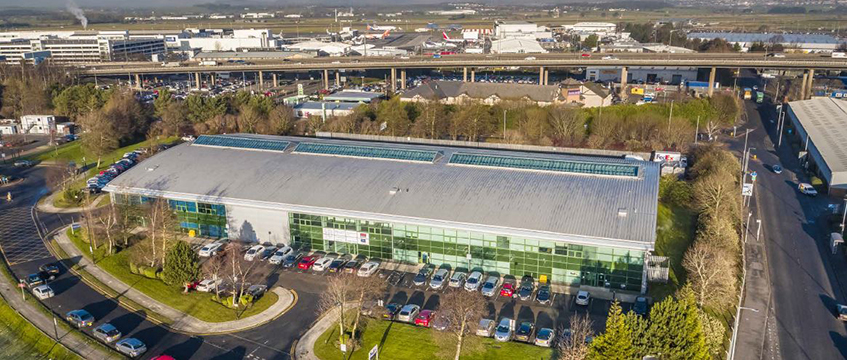Nuisance – Privacy – Injunction – Appellants residing in flats adjacent to respondent board’s museum – Museum walkway providing panoramic view including flat interiors – Appellants seeking injunction requiring respondent to close part of gallery – High Court dismissing claim – Appellants appealing – Whether appellants having claim in nuisance – Whether appellants entitled to injunction – Appeal dismissed
The appellants owned four adjacent flats in Central London in a development called Neo Bankside on the south side of the River Thames adjacent to the Tate Modern museum, which was housed in the old Bankside power station. Their living areas had floor-to-ceiling windows and looked directly on to a new extension of the Tate Modern. Around the tenth floor of that extension there was a walkway around which visitors could enjoy a 360-degree panoramic view of London. Unfortunately for the appellants, that panoramic view included the living areas of their flat interiors (to varying degrees, depending on their height within the block) which they said amounted to an actionable invasion of their privacy rights.
The appellants brought proceedings for an injunction requiring the respondent, as the board of trustees, to close part of the gallery which gave the views into their respective flats, though screening was proposed as an alternative. Their privacy rights were said to arise via the law of private nuisance.
The High Court refused the appellants’ claim for an injunction requiring the respondent to prevent members of the public and others observing the appellants’ flats, whether by cordoning off, screening or otherwise. The judge held that, although overlooking might constitute a nuisance in some cases, on balance, by living in homes with floor-to-ceiling windows, the appellants had created a self-induced incentive to gaze: [2019] EWHC 246 (Ch); [2019] EGLR 15. The appellants appealed.
Held: The appeal was dismissed.
(1) The overwhelming weight of judicial authority was that mere overlooking was not capable of giving rise to a cause of action in private nuisance. There was no decided case in this jurisdiction to the contrary. Consideration in the case law of the existence of a cause of action in nuisance for invasion of privacy and overlooking had often been in the context of disputes over obstruction of windows. The absence at common law of a right to light, short of an easement after 20 years’ use which satisfied the relevant conditions, and of general air flow and prospect, were mirrored by the absence of a right to prevent looking into a residence. The reason for the former (right to light, air flow and prospect) had been judicially explained as being that such a right would constrain building in towns and cities: Turner v Spooner (1861) 30 LJ Ch 801, Tapling v Jones (1865) 20 CBNS 166 and Chandler v Thompson (1911) 3 Camp 80 considered.
(2) Even in modern times, the law did not always provide a remedy for every annoyance to a neighbour, however considerable that annoyance might be. The general principle was that at common law anyone might build whatever they liked upon their land. Unlike such annoyances as noise, dirt, fumes, noxious smells and vibrations emanating from neighbouring land, it would be difficult, in the case of overlooking, to apply the objective test in nuisance for determining whether there had been a material interference with the amenity value of the affected land.
While the viewing of the appellant’s land by thousands of people from the Tate’s viewing gallery might be thought to be a clear case of nuisance at one end of the spectrum, overlooking on a much smaller scale might be just as objectively annoying to owners and occupiers of overlooked properties. It was difficult to envisage any clear legal guidance as to where the line would be drawn between what was legal and what was not, depending on the number of people and frequency of overlooking. It was well known that overlooking was frequently a ground of objection to planning applications: any recognition that the cause of action in nuisance included overlooking raised the prospect of claims in nuisance when such a planning objection had been rejected.
(3) When deciding whether to develop the common law by recognising that the cause of action for nuisance extended to overlooking, it was relevant to take into account other ways for protecting the owners of land from overlooking, including in particular planning laws and control. It had to be considered whether modern conditions required the well-established principles of common law nuisance, as to the right of landowners to build as they pleased, to be modified.
The common law freedom of an owner to build upon his land had been drastically curtailed by the Town and Country Planning Acts. It was now, in normal cases, necessary to obtain planning permission. The power of the planning authority to grant or refuse permission, subject to such conditions as it thought fit, provided a mechanism for control of the unrestricted right to build which could be used for the protection of people living in the vicinity of a development. In a case such as the present, the planning system was a more appropriate form of control than enlarging the right to bring actions for nuisance at common law: Hunter v Canary Wharf Ltd [1997] AC 655; [1997] PLSCS 108 followed.
(4) The present case gave rise to complex issues about reconciling public and private interests in a unique part of London which drew millions of visitors every year. It was well-established that planning permission was not a defence to an action for nuisance. That, however, was a different issue to whether, as a matter of policy, planning laws and regulations would be a better medium for controlling inappropriate overlooking than the uncertainty of an extension of the common law cause of action for nuisance.
The real issue in cases of overlooking, particularly in the present case, was invasion of privacy rather than (as with the tort of nuisance) damage to interests in property. There were already other laws which bore on privacy, including the law relating to confidentiality, misuse of private information, data protection, harassment and stalking. The legislature had intervened and was better suited than the courts to weigh up competing interests. It would be preferable to leave it to Parliament to formulate any further laws perceived to be necessary to deal with overlooking rather than to extend the law of private nuisance.
Tom Weekes QC and Richard Moules (instructed by Forsters LLP) appeared for the appellants; Guy Fetherstonhaugh QC, Elizabeth Fitzgerald and Aileen McColgan (instructed by Herbert Smith Freehills LLP) appeared for the respondent.
Eileen O’Grady, barrister
Click here to read a transcript of Fearn and others v Board of Trustees of Tate Gallery










